BY JESSI ALLEN, LAURA BOGGESS AND JAMES LENDEMER
You’ve probably heard of old-man’s-beard. How about rock tripe, tattered jellyskin or mixed-up pixie cup? These are delightful common names of a few of the more than 1,200 species of lichens found in the Western North Carolina mountains. Lichens are actually two unrelated species that rely on each other: Fungi provide structure, while algae or cyanobacteria provide food through photosynthesis.
For the record: Lichens do not harm trees! Because the algae can photosynthesize, the lichens don’t need to draw energy from the tree.
Those of us who love and study Southern Appalachian lichens are happy to see the growing interest in them, particularly the increasing use of members of the genus Usnea, the beard lichens, in medicinal tinctures. The 30 species of Usnea found in these mountains contain usnic acid, an antiviral, antibacterial and antifungal agent.
With such abundance and diversity, beard lichens seem as common as oak trees or gray squirrels. But don’t be fooled: Although Usnea once ranged all along the East Coast, these species have disappeared from most of North America due to deforestation and poor air quality. We are fortunate to live in an Usnea-rich bubble, but over-harvesting or other unsustainable collection practices could threaten the beard lichens’ very survival.
It’s the law
If you decide to harvest Usnea to make your own tincture, where do you begin? As with any wild harvest, the first consideration is legality. Collecting any federal- or state-listed rare lichen is prohibited. Currently we have one listed species of Usnea: U. angulata. It’s tough to distinguish this species from other Usneas, but careful observation will reveal distinct ridges or wings along the main stem.
On public lands, both the Nantahala and Pisgah national forests allow limited lichen collection for personal use, except in wilderness and wilderness study areas. Limited collection is also allowed on N.C. Wildlife Resources Commission properties, such as the Needmore and Sandy Mush game lands. On Forest Service lands, including the Headwaters and DuPont state forests, the rules differ by unit: Call before collecting.
Collection of any kind is illegal in national parks, such as the Great Smoky Mountains and the Blue Ridge Parkway, and in North Carolina state parks, including Mount Mitchell and Gorges. And of course, on private lands, you need to get the property owners’ permission to collect.
The honorable harvest
Second, follow sustainable harvest practices to help maintain our local populations. That means harvesting only individuals that are unlikely to survive.
Mushrooms are the fruiting bodies of a fungus and can be harvested without harming the whole organism, much like picking an apple from a tree. Picking a lichen, however, is more like digging up a yellow lady’s-slipper or taking a hellbender home: Once it’s removed from its substrate or habitat, it probably won’t survive.
Harvesting an Usnea that’s still attached to a tree or a rock means that a new spore will need to land and become established in order for the lichen to grow. This could take a very long time, if it happens at all. Luckily, fallen branches covered in Usnea are often found on the ground, and harvesting them is OK. The same is true for any individual that’s already detached from its home rock or bark. Just because an Usnea has recently fallen to the ground doesn’t mean it has fewer beneficial properties.
Third, all wild harvesting should be done in a way that respects the surrounding ecology. In her beautiful book Braiding Sweetgrass, ecologist Robin Wall Kimmerer describes an indigenous code that can guide the way we use the earth’s gifts. She describes this “honorable harvest” as a covenant of reciprocity between humans and the land. Its tenets include:
- Take only what you need, and leave some for others.
- Use everything you take.
- Reciprocate the gift: Care for organisms in the wild.
- Share it, as the earth has shared with you.
- Be grateful.
If, on the other hand, you’re buying Usnea products, ask the vendor about the source. Trained herbalists in the Asheville area should know not to harvest lichens that are still attached to their parent trees or rocks, but asking helps reinforce the importance of sustainable practices.
Either way, these principles remind us that we’re part of a rich fabric woven from the lives of many organisms, including our own. By asking permission and taking only what we use, we are bucking the trend of an extractive economy that always asks “What more can we take?” and shifting the question to “What more can we give?”
Whether you’re collecting your own Usnea or buying a ready-made tincture, our actions matter — and our attitudes and harvesting practices are woven into the ecosystem we’re a part of. By practicing the honorable harvest, we increase the likelihood that humans will be able to keep appreciating and harvesting Usnea for generations to come.
Happy lichenizing!
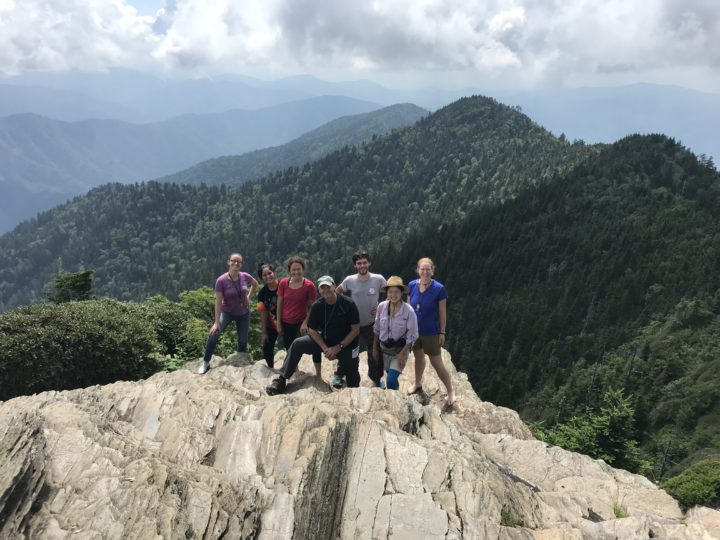
Lichenologists Jessi Allen, Laura Boggess and James Lendemer share a deep love for the lichens of the Southern Appalachians. Special thanks to Luke Cannon of Astounding Earth and Gary Kauffman of the National Forests in North Carolina for their helpful comments and support.


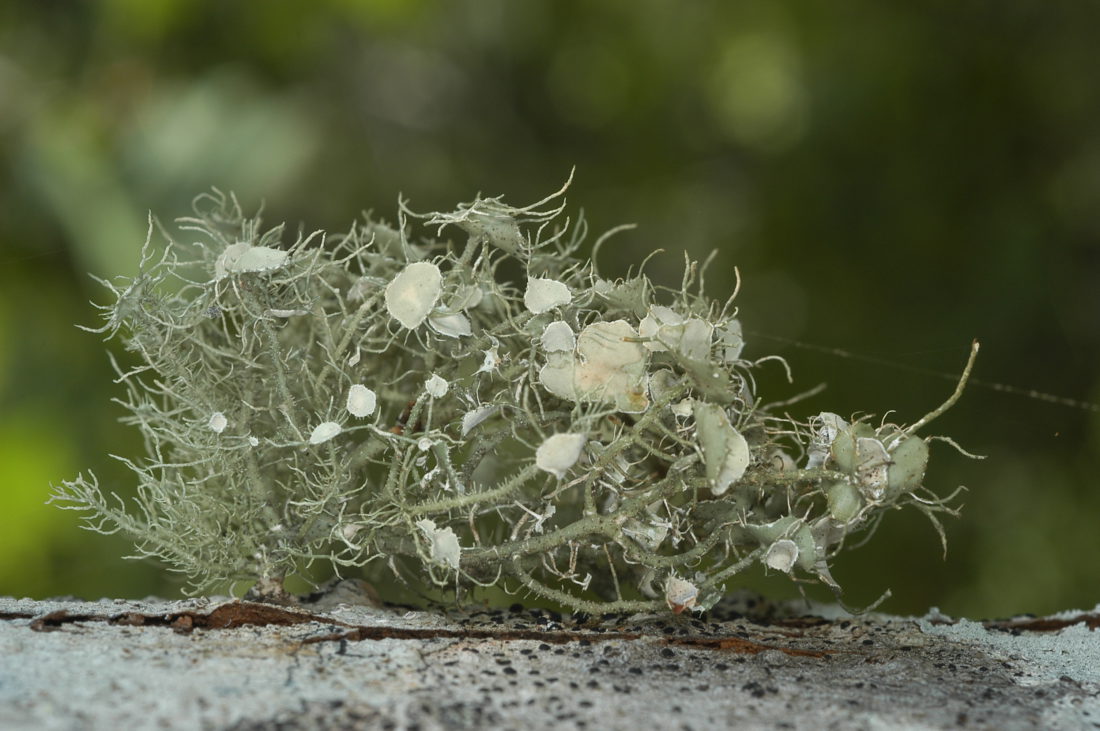
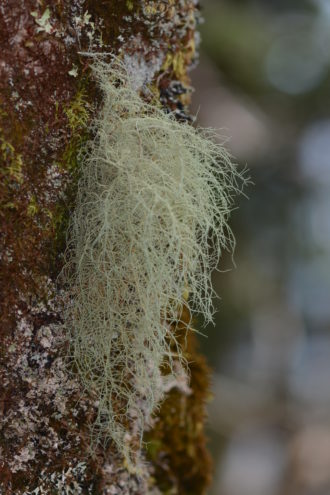
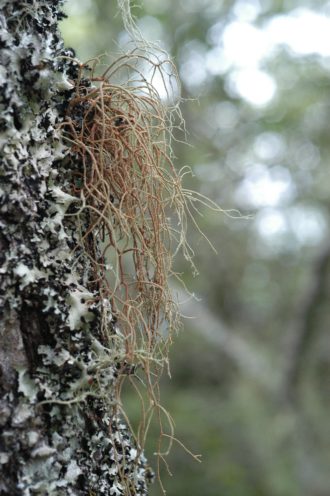

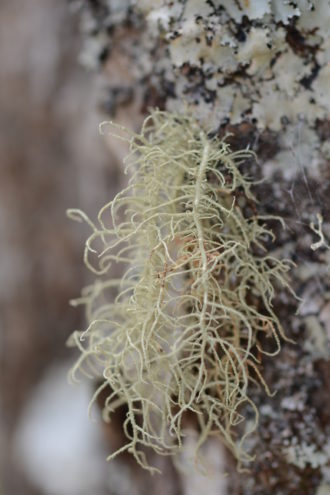
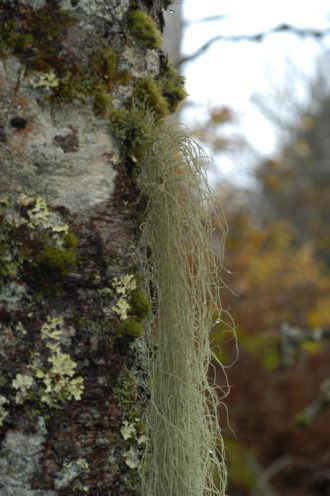
I found this wonderful lichen growing on a flowering crab apple tree in front of my house in West Columbia, SC, and have since kept a keen eye out for it and found it growing profusely on a tree at the south end of the Lake Murray Dam, on the public beach. I had a hunch it would do well next to a large body of water. I found one lovely specimen with bright orange cups – again in my yard, I have some photos.